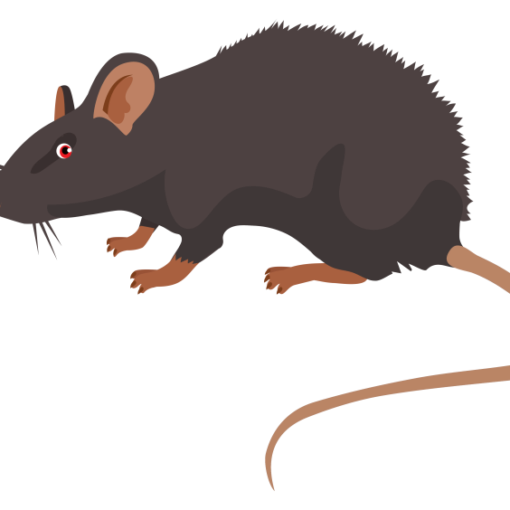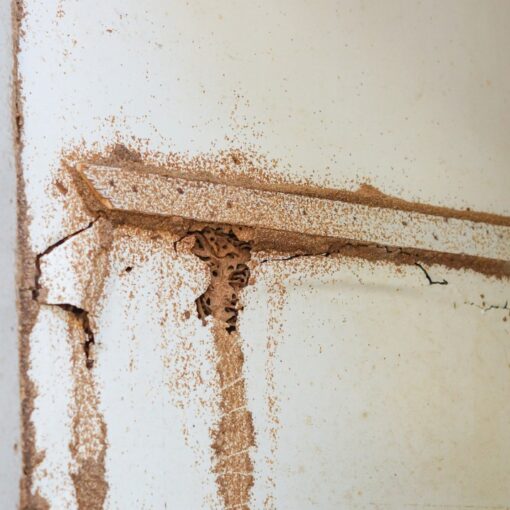 Understanding the Threat to Building Structures
Understanding the Threat to Building Structures
Subterranean termites present a notable danger to the integrity of building structures as they possess a destructive nature and the ability to cause concealed harm. These insects specifically target wooden structures, consuming cellulose materials within walls, floors, and foundations. Unlike other pests, subterranean termites often go unnoticed until the damage becomes severe, jeopardizing the overall stability of buildings.
It is imperative to conduct regular inspections as an early intervention strategy to detect termite activity and prevent extensive damage before it worsens. Implementing effective treatments and preventive measures is vital to protect buildings from the detrimental impact of subterranean termites.
Importance of Effective Termite Control
The significance of effective termite control Phoenix cannot be overstated when it comes to safeguarding properties from the destructive impact caused by these persistent pests. Termites can cause extensive damage by consuming wood and cellulose materials within buildings, resulting in structural deterioration, property devaluation, and financial losses. Their insatiable appetite can compromise the stability of structures, posing safety hazards and diminishing the value of properties.
Importance of Regular Inspections and Treatments
Regular inspections and treatments play a vital role in preserving properties’ structural integrity and worth. Inspections enable early detection of termite activity, allowing for prompt intervention before significant damage occurs. Treatments, such as the application of termiticides or the implementation of baiting systems, offer effective methods to control and prevent termite infestations. Property owners can take proactive measures to protect their homes or structures by investing in regular inspections and treatments, potentially saving substantial costs on repairs and maintaining a pest-free environment.
 Granada Pest Control | A Legacy of Service
Granada Pest Control | A Legacy of Service
Granada Pest Control has established itself as a paragon of service excellence, embodying core values and an unwavering commitment to customer satisfaction. Their services extend to Sun City, Sun City West, Surprise, Peoria, Glendale, and beyond, catering to residential and commercial clients with utmost dedication.
With a team of highly trained professionals boasting extensive experience, Granada’s termite control Phoenix delivers safe and efficient solutions tailored to each client’s unique needs. Their unwavering focus on quality is reflected in their 100% satisfaction guarantee on all services provided, ensuring peace of mind and fostering trust in every interaction.
Types of Termites
Termites are classified into three main types: subterranean, dry wood, and damp wood termites. Each type exhibits unique behaviors and nesting habits, affecting their preferred habitats and the level of damage they can inflict on wooden structures. Recognizing these distinctions is crucial for successful termite identification and control methods.
Identifying Common Species
In Phoenix, prevalent termite species include subterranean termites, drywood termites, and desert dampwood termites. Subterranean termites, known for their destructive nature, construct mud tubes and travel underground. Drywood termites infest dry wooden structures, while desert dampwood termites thrive in moist conditions. Recognizing these species is vital for implementing effective termite control strategies in Phoenix residences and establishments.
Behavior and Habits
Each type of termite displays specific behaviors and habits. Subterranean termites nest underground, create mud tubes, and favor damp settings, causing extensive damage to buildings. Drywood termites nest within the wood they infest and do not need soil contact.
They target dry wooden structures and can cause significant harm over time. Dampwood termites prefer damp or decaying wood, typically infesting moist structural wood or outdoor wooden constructions. Understanding these distinctions is essential for successful termite identification and control approaches.
The Significance of Termite Inspections
Termite inspections play a crucial role in protecting the structural integrity of buildings. Subterranean termites, known for causing hidden damage, can wreak havoc on wooden structures without detection until the destruction is severe.
Regular inspections enable early identification of termite activity, allowing for timely intervention before significant harm is done. Professional inspection services ensure comprehensive assessments, identifying signs of infestation and weaknesses in the structure.
Early Detection for Preventing Extensive Damage
Timely detection of termite activity is essential in preventing extensive damage to buildings and other structures. By recognizing early signs of termite infestation, such as mud tubes, discarded wings, or hollow-sounding wood, property owners can take immediate action to minimize the damage. Early identification facilitates the implementation of targeted treatments and preventive measures, having termite control Phoenix, reducing the impact of termites and protecting the property from costly repairs.
Inspection Techniques
Inspection professionals utilize visual inspections to identify visible signs like mud tubes and damaged wood while probing and tapping tools help uncover hollow sounds that indicate termite damage. Moisture detection tools and thermal imaging cameras assist in locating hidden infestations, and specially trained termite detection dogs can accurately pinpoint the scent of termites.
Importance of Professional Inspection Services
Trained inspectors possess the necessary expertise and specialized tools to identify subtle signs of infestation that may go unnoticed by untrained individuals. Their understanding of termite behavior and habitats enables them to pinpoint potential entry points and vulnerable areas, allowing for targeted treatments and preventive measures.
By relying on professional inspection services, property owners can have peace of mind knowing that any termite activity will be promptly detected and addressed, reducing the risk of extensive damage and ensuring the long-term integrity of their structures.
Treatment Options for Subterranean Termites
Treatment options for subterranean termites involve the use of termiticides and the implementation of baiting systems. Termiticides are chemicals applied to the soil or directly onto infested areas to eradicate termites on contact and establish barriers to prevent future infestations.
On the other hand, Baiting systems utilize termite bait stations strategically placed around the property to attract termites to feed on poisoned bait and share it with the colony, ultimately leading to colony elimination.
Overview of Termiticides and Baiting Systems
Termiticides and baiting systems are commonly used methods for managing subterranean termites. Termiticides are chemical treatments applied to the soil or infested areas to create barriers against termite entry and eliminate existing colonies upon contact.
Baiting systems involve strategically positioning bait stations around the property, which termites consume and share with their colony, resulting in colony elimination. Both termiticides and baiting systems effectively safeguard buildings and structures from termite infestations, ensuring long-term control and prevention.
Eco-Friendly Solutions for a Healthier Home Environment
Regarding termite control Phoenix, it is beneficial to prioritize using non-toxic, environmentally safe methods to safeguard homes and promote a healthier living environment. These solutions may consist of natural repellents, botanical-based treatments, or physical barriers that deter termites without causing harm to the ecosystem.
Opting for eco-friendly alternatives enables homeowners to efficiently address termite infestations while reducing their environmental impact, thus ensuring a safer and more sustainable approach to pest control.
Chemical Treatments
Chemical treatments involve using specific chemicals, known as termiticides, to manage termite populations and prevent infestations in buildings and structures. These treatments can be administered in various forms, such as liquid sprays, foam injections, or baiting systems. When applied correctly by trained professionals, chemical treatments effectively control termites and safeguard structures from damage.
Overview of Treatment Options
Treatment options for termite control encompass chemical treatments, physical barriers, biological solutions, and integrated pest management (IPM). Chemical treatments entail using termiticides, while physical barriers establish hindrances to termite entry.
Biological solutions employ natural predators or parasites, and IPM integrates various methods for comprehensive control. Each approach aims to efficiently manage termite populations and shield structures from harm.
Application Techniques
Application techniques for termite control encompass precise methods for applying termiticides or treatments. These methods consist of utilizing liquid sprays to establish barriers around buildings, injecting foam into specific areas within structures, and strategically placing baiting systems to eradicate termite colonies. Physical barriers implemented during construction and biological solutions employing natural predators or parasites are also employed.
Physical Barriers and Exclusion Methods
Physical barriers and exclusion methods serve as effective strategies for preventing termite infestations and safeguarding buildings. These approaches involve the installation of barriers during construction to obstruct termite entry points.
Examples of physical barriers include the installation of metal mesh or plastic sheeting, sealing entry points with caulk or sealant, using termite-resistant materials like pressure-treated wood, ensuring proper drainage, and placing barriers such as gravel or concrete around wooden structures.
Installing Termite Barriers
The installation of termite barriers entails integrating physical barriers during construction to impede termite entry points. Typically, these barriers are installed around the foundation or vulnerable building areas to prevent termites from accessing the structure. By creating a physical obstacle that termites find difficult to penetrate, termite barriers effectively discourage infestations and safeguard buildings from damage.
Sealing Entry Points
Sealing off cracks, crevices, and utility penetrations is necessary using materials like caulk or sealant to prevent termites from entering a building. This helps create barriers that deter termites and reduces the risk of infestation, contributing to effective termite control Phoenix measures.
Biological Control Options
The management of termite populations can be achieved through biological control options. These options involve using natural predators, parasites, or microorganisms to disrupt termite colonies’ reproduction, foraging, or feeding behaviors.
Employing methods such as introducing predatory insects or nematodes, using pathogenic fungi or bacteria, or disrupting their communication and mating patterns with pheromones allows termite populations to be controlled without relying on chemical treatments.
Beneficial Organisms for Termite Control
Predatory insects like ants and certain wasps, parasitic nematodes, fungi, bacteria, and predatory birds and reptiles are beneficial organisms for termite control. These organisms prey on or parasitize termites, naturally managing termite populations and reducing the risk of structural damage.
Implementing Biological Solutions
Implementing biological solutions for termite control involves introducing natural predators, parasites, or microorganisms into the environment to target termite populations. This can be done by releasing predatory insects, such as specific species of ants or wasps, that feed on termites. Alternatively, parasitic nematodes can be applied to areas infested with termites. Pathogenic fungi or bacteria can also be introduced to infect and weaken termite colonies. Another method is to use synthetic versions of termite pheromones to disrupt their communication and mating behaviors.
Integrated Pest Management (IPM) Approaches
IPM approaches merge different strategies to efficiently handle pests while minimizing their environmental impact and reducing the need for chemical treatments. These approaches encompass techniques like biological control, modifying habitats, cultural practices, and using pesticides only as a last resort.
By integrating multiple tactics customized to specific pest species and environments, IPM promotes sustainable solutions for pest control that prioritize long-term effectiveness and environmental stewardship.
Comprehensive Termite Management Strategies
Comprehensive termite management strategies incorporate both pre- and post-construction measures, including the utilization of termite-resistant materials, regular inspections, chemical treatments, baiting systems, and moisture control.
Using integrated pest management (IPM) techniques ensures sustainable control by combining biological, cultural, and chemical methods. Educating property owners on prevention further enhances the effectiveness of these strategies.
Combining Various Control Methods
It is crucial to combine various control methods to achieve effective pest management. Property owners can create a comprehensive approach to pest control by integrating techniques such as chemical treatments, physical barriers, biological control, and cultural practices.
This strategy maximizes effectiveness while minimizing environmental impact and reducing reliance on any single method. By tailoring control methods to the specific pest species and environment, property owners can achieve sustainable, long-term solutions for pest management.
DIY vs. Professional Termite Control
DIY termite control allows homeowners to use self-administered methods like bait stations or foam treatments to manage termite infestations without professional help, offering affordability and convenience.
On the other hand, professional termite control involves hiring trained professionals who conduct thorough inspections, customize treatment plans, and provide comprehensive solutions for termite management. While more expensive, professional services offer expertise, guaranteed results, and ongoing support for effective and long-lasting termite control Phoenix.
Pros and Cons of Each Approach
DIY termite control provides affordability and convenience but may lack effectiveness, especially for severe infestations. It empowers homeowners to take immediate action but requires time, effort, and knowledge to execute correctly. Professional termite control, although pricier, offers expertise, comprehensive treatments, and guaranteed results.
Professionals conduct thorough inspections, customize solutions, and offer ongoing support for effective and long-lasting termite management. However, professional services may require scheduling and may not be immediately available. Ultimately, the choice between DIY and professional termite control depends on factors like the severity of the infestation, budget, and individual preferences.
Investing in Termite Inspections and Treatments
Investing in termite inspections and treatments is crucial for maintaining the integrity and value of properties. Regular inspections allow for early detection of termite activity, enabling prompt intervention before significant damage occurs. Treatments, such as termiticides or baiting systems, effectively control infestations and prevent future damage.
Cost-Effective Strategies for Property Protection
Implementing cost-effective strategies for protecting properties against termites involves a combination of preventive measures and targeted treatments. These strategies include maintaining appropriate moisture levels, eliminating wood-to-soil contact, and sealing entry points.
By conducting regular inspections, early infestations can be detected, reducing the need for extensive treatments. Additionally, choosing durable materials during construction and utilizing termite-resistant wood treatments can act as deterrents against infestations.
Potential Savings in Repair Costs
Investing in termite inspections and treatments can significantly save repair costs by preventing extensive damage to buildings and structures. Early detection of termite activity allows for immediate intervention, minimizing the extent of damage and reducing repair expenses. Properties can be protected against future infestations by implementing preventive measures and treatments, thereby decreasing the risk of costly repairs.
Conclusion
Effective termite control Phoenix necessitates using expert strategies tailored to the local environment. From proactive inspections to targeted treatments, investing in professional services ensures comprehensive protection for homes and structures, safeguards against termite damage, and provides peace of mind for property owners.




